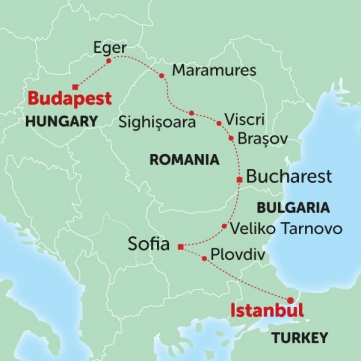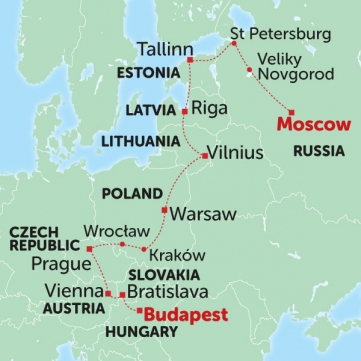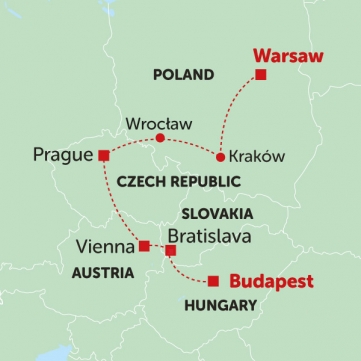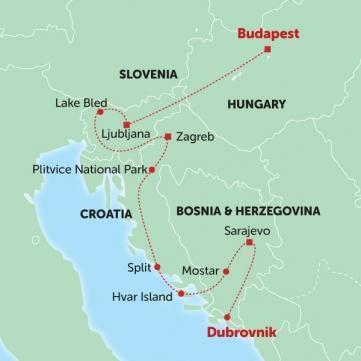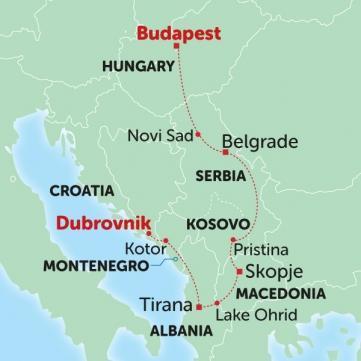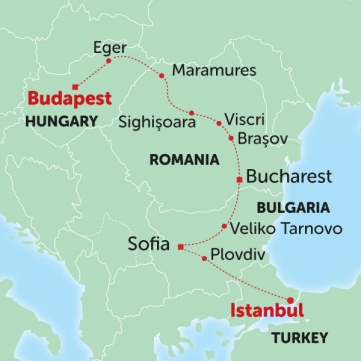Book NOW for $1 £1 €1 • Flexible Payments • No Change Fees • Private Departures Available
- Home >>
- Budapest City Guide
Budapest Travel Guide
Budapest City Guide
They call it the Paris of the East, the City of Spas and a must-see destination in Eastern Europe. Budapest is a dynamic mix of old and new, where ancient history is peppered through the streets, specks of communist rule can be seen throughout the city and yet modernisation is slowly creeping in. The River Danube winds through the centre separating Buda and Pest into their individual characters, while the eight bridges that connect the two sides each tell their own story. Budapest is also home to the beautifully ornate parliament which is the largest building in Hungary and one of the most impressive parliaments in Europe. Pair this with other astonishing architectural accomplishments such as the Buda Castle, St Stephen’s Basilica and Szechenyi Thermal Baths and you have a city brimming with aesthetic beauty and a bounty of culture. And we haven’t even started on the food. Keep reading our Budapest travel guide for all the information you’ll need for a holiday to Budapest.
Trips that visit Budapest
Budapest to Bucharest
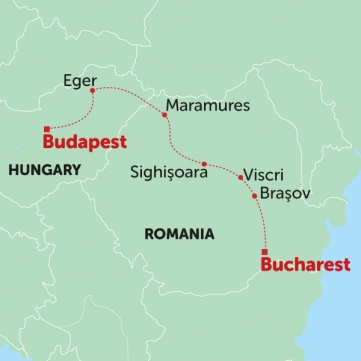
Duration:9 Days
Route:Budapest to Bucharest
Tour Code:EEBR
Central Europe Highlights
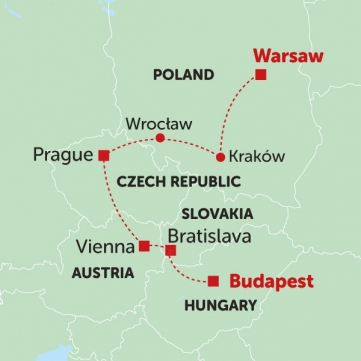
Duration:10 Days
Route:Warsaw to Budapest
Tour Code:EEXC
Budapest to Dubrovnik
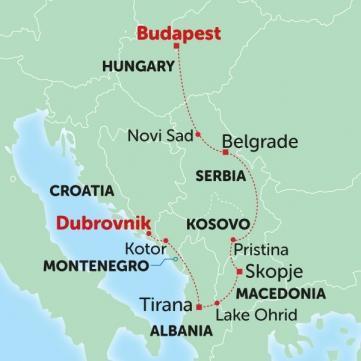
Duration:14 Days
Route:Budapest to Dubrovnik
Tour Code:EEPD
Budapest’s Best Spots
Budapest has a huge choice of sites and activities for every type of traveller. You could be cruising down the Danube enjoying a local Hungarian wine, you could be learning about some of the country’s dark history at the Terror Museum or you could be partying the night away at one of the trendy ruin bars. Whatever your travel style, Budapest has you covered. We have compiled our list of the best spots in Budapest below.
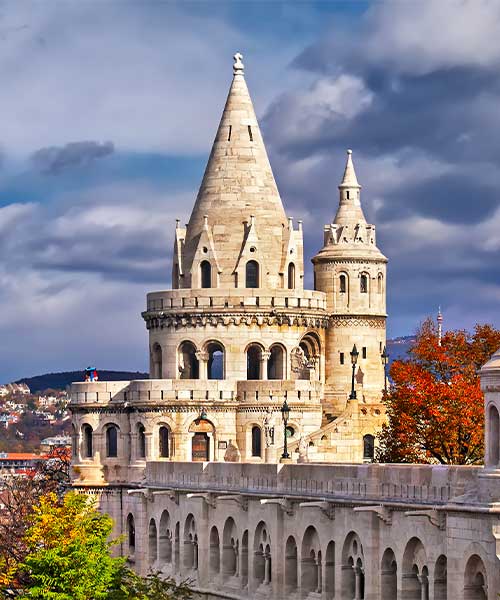
Buda Castle & Fisherman's Bastion
Buda Castle is the historical compound of the Hungarian kings. The impressive structure encompasses an area of almost 2 square miles and overlooks the river and Pest area of the city. It was first constructed in 1265, while the Baroque palace was added in the mid 1700’s. Formerly known as the Royal Castle, the building is now home to the Budapest History Museum and Hungarian National Gallery. The UNESCO World Heritage Site offers an insight into the medieval period of Hungary and offers unrivalled panoramic views of the city below.
The Fisherman’s Bastion refers to the largest turret in the complex with beautiful spires and Neo-romanesque balconies. The structure was added in 1902 to celebrate the 1000th birthday of the Hungarian state, with seven turrets representing the seven tribes that founded Hungary in 895.
Top Tip
The castle complex is open 24 hours, however during the hours of 9am to 8pm from March to October it costs 500 HUF to reach the top turrets. Outside these hours it is free of charge. If you aim to visit the Fisherman’s Bastion as early as possible, you will save money and beat the crowds. During winter, it is free of charge all day.
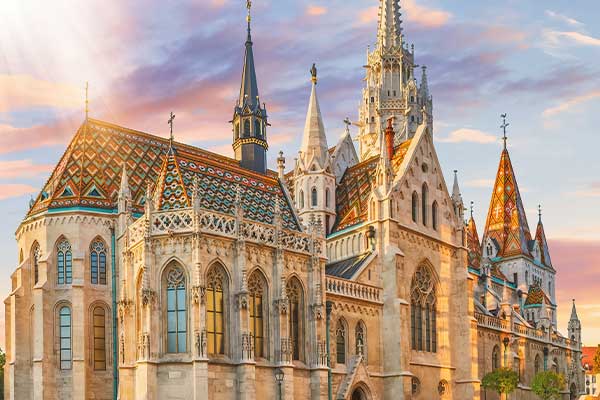
Matthias Church
Matthias Church is also located in the Buda Castle complex and happens to perch right next to the Fisherman’s Bastion, so you can see it all at once. The main characteristic of this church is the beautifully tiled roof in shades of orange, green and brown which blanket the already stunning building. Also known as the Church of Our Lady, it was built in 1015 to represent the country’s conversion to Christian faith. The interior is adorned with sculptures, wooden structures and gold painted walls.
If you want to explore inside then a ticket will set you back HUF 1,800.
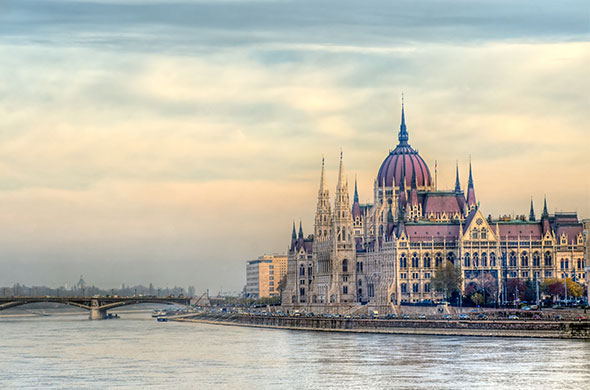
Hungarian Parliament
Possibly one of the most iconic buildings in the country, the Hungarian Parliament is the seat of the Hungarian National Assembly and one of the most popular tourist attractions in the city. Covering an area of 18,000 meters squared and housing almost 700 rooms, the structure also encompasses architectural styles from the Gothic, Baroque and Renaissance eras, making it one of the most appealing buildings both inside and out.
Construction began in 1885 and the building was completed in 1902, on the 1000th anniversary of the founding of Hungary. There are two ways to experience the beauty of the parliament: book a guided tour inside the building or enjoy a Danube cruise where you can see the exterior from further away. This is especially unique at night when the whole building is illuminated.
Top Tip
If you do wish to book a guided tour inside the parliament, make sure you book in advance.
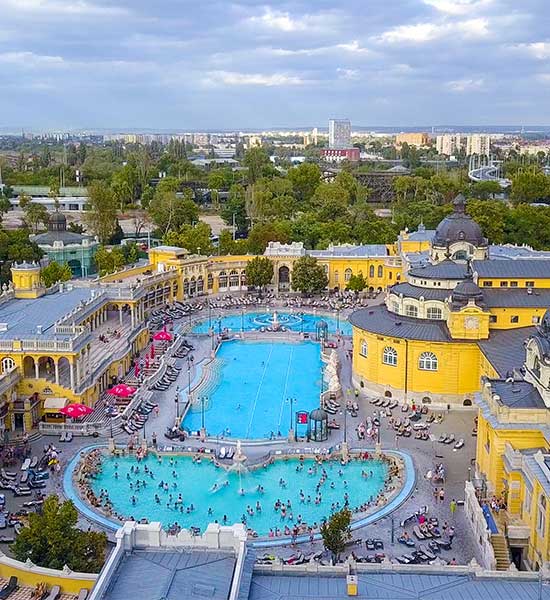
Szechenyi Thermal Baths
While this is undeniably a tourist hot-spot, the biggest thermal bath in Budapest is definitely worth a visit in our eyes. First opened in 1913, the medicinal complex is fed by two thermal springs and is open year round, with temperatures sitting between 16 and 38 degrees Celsius depending on the pool you’re bathing in. It’s had its series of renovations over the years, with the latest refurbishment occurring in 2009. The Neo-Baroque architecture remains a strong focal point of the spa and it still retains its ornate appearance today.
Overall the compound has 3 large outdoor pools and 15 indoor baths, ranging in size and temperature. While the water is considered to have medicinal properties, you can go a step further on the wellness front and book a massage therapist and facial treatment.
Top Tip
Szechenyi Thermal Baths is also home to the famous Sparty. That’s right - a spa-party! The organisers claim its “where the ancient bath culture of Budapest, and modern electronic dance music meet” and it happens every Saturday from February to December. It’s essential to book tickets in advance.
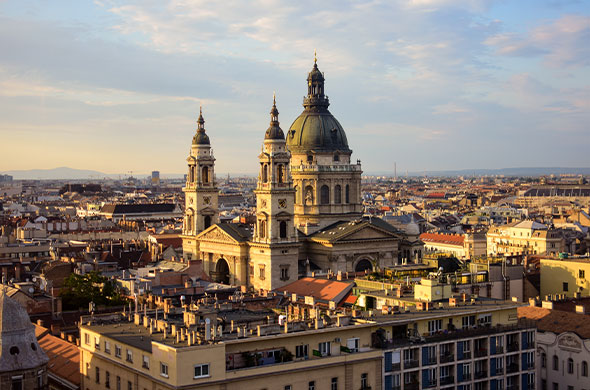
St Stephen’s Basilica
St Stephen’s Basilica is a Roman Catholic Church which was named after the first King of Hungary who ruled from 975 to 1038. It’s currently the third largest church in Hungary and its facade is a recognizable image of Budapest. Reaching a height of 96 meters, the Basilica is of joint height with the Hungarian Parliament. Regulations forbade any structure erected in Budapest to be built taller than the church, to show the importance of spiritual thinking. Therefore, when the parliament was constructed, it was built to the same height and not an inch taller to respect this decision. The interior is adorned with mosaics, stained glass, statues and a shrine with St Stephen’s relics.
The church has played an important role in the classical music community of Hungary since its construction and to this day organizes concerts and other musical performances.
Food & Drink in Budapest
If you’re a true foodie, a trip to Budapest won’t disappoint your tastebuds. Classic Hungarian cuisine is rich, hearty and full of carbs to keep you warm, with a dash of influence from neighbouring countries. The city is bursting with restaurants, cafes, bars and markets and the prices are much more affordable than cities in Western Europe. You could be sampling some of the best street food by day and sitting down for a fine-dining experience by night, picking up local treats in the Central Market to take home or trying some of the best Hungarian wine underneath the castle. The options are simply endless!
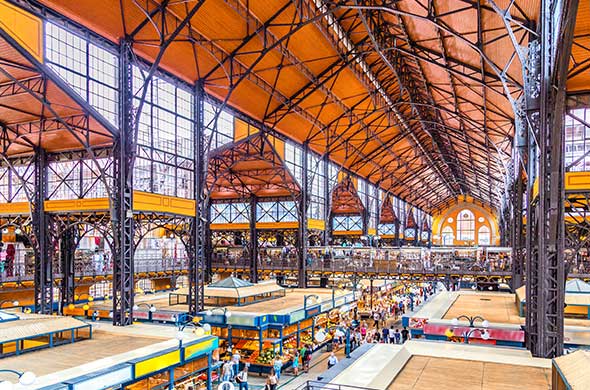
Central Market Hall / Street Food
Don’t leave Budapest without dipping into the famous Central Market Hall - a place where fresh produce and quirky souvenirs are sold on three floors. Pick up traditional spices such as paprika, a bottle of traditional palinka or perhaps some tasty home-made chocolate. The Central Market Hall was built in 1987 and due to its size and location remains one of the most popular produce markets in the city. Whether you want to simply experience the market, pick up some local food or learn about the most important ingredients in Hungary through a guided tour - we highly recommend setting an hour or two aside to visit.
Street food is also popular in Budapest and one of the best we have found is Karavan Street Food Market, nestled in an outdoor courtyard next to the famous Szimpla Kert ruin bar. Choose from local dishes such as langos, or try one of the international stalls that sell anything from pasta to vegan burgers.
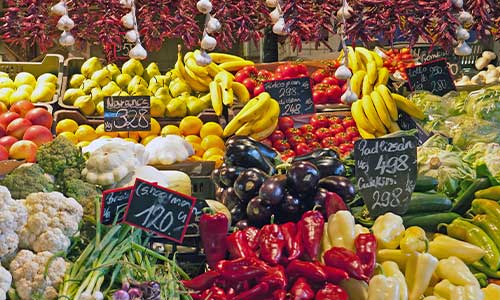
Vegetarian and Vegan
Budapest is an excellent destination for plant-based eaters. While you need to stay clear of traditional goulash, the city has plenty of vegan restaurants with lots of variety on offer. Vegan restaurant finder, HappyCow, reports that Budapest has over 150 restaurants that are vegan or vegetarian friendly. Some of the most popular are Napfenyes Restaurant, Vegazzi Pizza and Vegan Love.
Which dishes should I try in Budapest?

Goulash
This is one of the most famous dishes in Hungary. It can be described as a mixture between a soup and a stew and is traditionally made of beef, potatoes, carrot and spices.
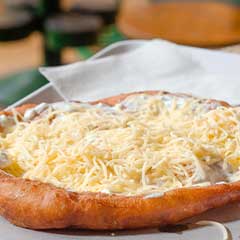
Langos
Langos is a delicious dish made from deep-fried flat bread. It’s topped with anything you wish, however the most popular combination is cheese and sour cream.

Stuffed Cabbage Leaves
This dish is popular throughout Eastern Europe and common in many Hungarian kitchens. Boiled cabbage leaves are filled with pork, rice and paprika.
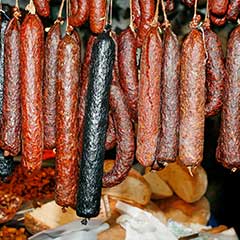
Kolbasz
Otherwise known as Hungarian sausage - there are endless types sold in restaurants across the city.
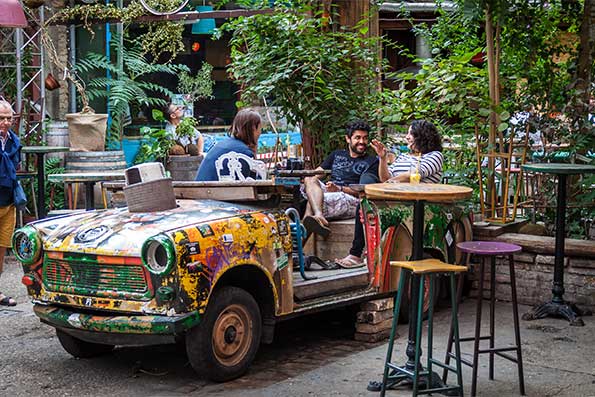
Bars and Drinking in Budapest
Budapest retains a high position for some of the best night-life in Eastern Europe, and a big element of this party culture comes from the famous ruin bars that began popping up around the city in the early 2000’s. Ruin bars were built in the remains of old buildings, warehouses and stores that were left to crumble after World War II. An underground bar scene slowly developed in the remnants of the buildings that once were and the Budapest ruin bar scene was born. Ruin bars are very unique in personality - bursting with old flea-market furniture, colourful wall art and bizarre statues, paintings and figures.
Szimpla Kert was the first ruin bar that opened and remains the most popular, however has become somewhat of a tourist trap in recent years, so we suggest seeking out the smaller ones for a more authentic experience.
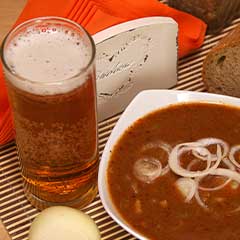
Beer
Like many of their European neighbours, Hungarians love beer. Domestic beers are similar to German lagers and are available in restaurants and bars throughout the city. Microbreweries are also popping up regularly.
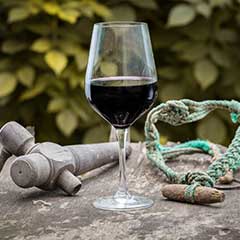
Bull's Blood Wine
Hungary has 22 wine regions in total, making it one of the most popular drinks consumed in Budapest. Try Bull’s Blood, a full-bodied red wine that hails from Eger, a town in the east of Hungary.
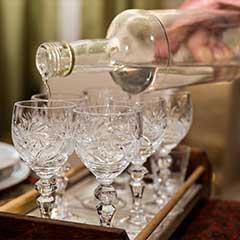
Palinka
You can’t visit Hungary without sampling the national drink - Palinka. This fruit brandy is high in alcohol content and it’s made from a variety of fruit including apples, apricot or plum. It’s designed to be savoured and enjoyed slowly, either with a meal or after.
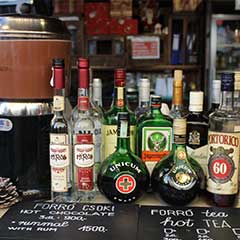
Unicum
This strong, herbal liqueur is similar to Jagermeister and a national beverage of Hungary. It’s common in Budapests’ party scene and is commonly consumed after meals, not during.
Getting around Budapest
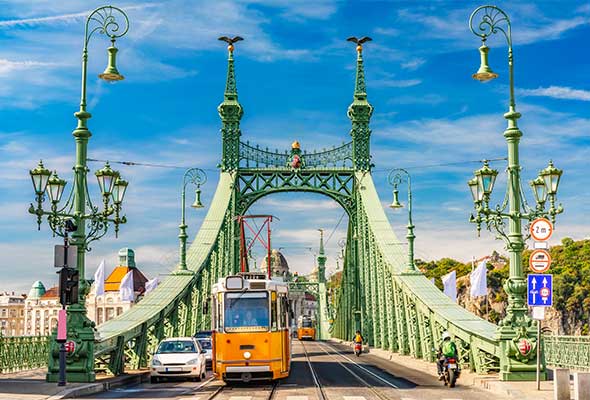
Budapest has both a metro and a tram system. Tickets can be purchased from machines inside the metro stations or most tram stops at a cost of 350 HUF for one ride. This is ideal if you won’t be using the systems all that much on your holiday, however if you think you will require lots of journeys you should look into purchasing a Budapest City Card which allows unlimited free transport as well as other perks. These are available for 24 hours, 48 hours and up to 120 hours.
The Budapest Metro system has 4 lines. The M1 is actually the oldest metro line on continental Europe, only being predated by the London Underground. Once you have purchased your ticket, you must validate it in the yellow stamp machines in each station before boarding the train. The metro is a quick and convenient way to reach many places within Budapest, especially on the Pest side of the city.
The Tram system is another convenient form of transport and is ideal for shorter journeys or to reach locations that may not be close to a metro station. They are also a much better way to see the city from above ground.
Budapest also has taxis and Bolt, which is the same concept as Uber. However, Budapest is a very walkable city and exploring the various neighbourhoods by foot is the best way to get to know this fantastic city.
Group Tours to Hungary
Dubrovnik to Budapest
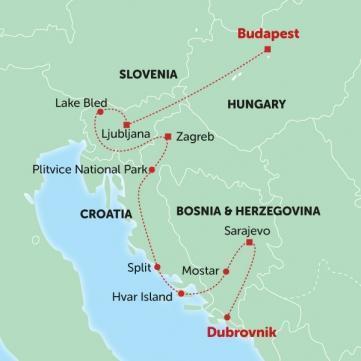
Duration:14 Days
Route:Dubrovnik to Budapest
Tour Code:EEDP
Top things to do in and around Budapest
Budapest has plenty of activities to keep you occupied. Whether you want to immerse yourself in the history, explore the foodie-side of the city or simply take in the stunning architecture, Budapest really is a fantastic destination.
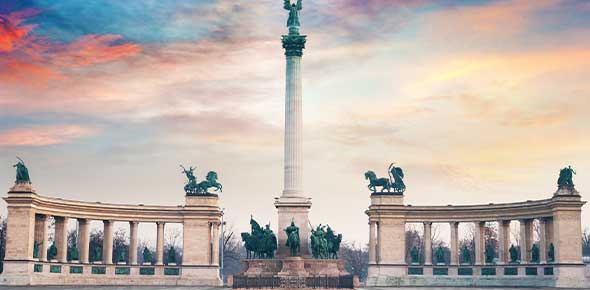
Visit Hero’s Square
Hero’s Square is notably the most important in Budapest and is an ode to Hungary’s leaders and founders. It encompasses a statue complex which features the seven chieftains of the Hungarians who were the leaders of the seven tribes who founded Hungary. It also honours the past kings of Hungary. Hero’s Square has been the base for many of Budapst’s political events and protests and remains a symbol of glory and peace.
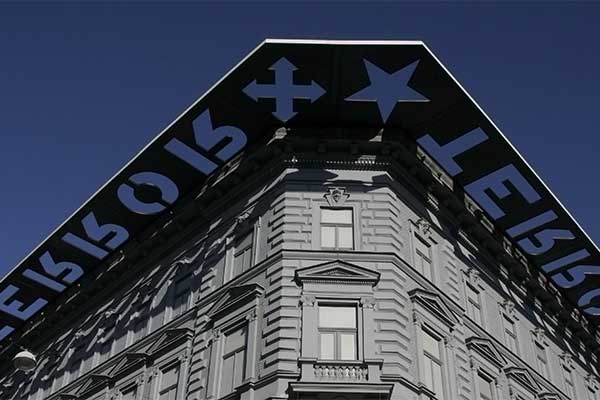
Visit the House of Terror Museum
The building that now houses the famous House of Terror Museum represents the cruel regime of the Nazi party during World War II. In 1944, the Hungarian Nazi Party took over Budapest and formed their headquarters in this exact building. During their period of terror, the Nazi’s tortured and killed hundreds of people within these walls, and gave orders to slaughter even more on the outside. While the Hungarian Nazi Party was soon overthrown by the Soviet Union, the fear didn’t end for the people of Hungary and communist rule was eventually abolished in 1989.
In 2002 the building was opened as a museum to share with the world the horror that the Hungarian people faced, and the atrocious stories of both the Nazi and Communist rule. For a vital insight into history and to show respect to the people of Hungary, we highly recommend visiting this museum which is both an emotional and educational experience.
The orders that were given to shoot Jews into the Danube River came from these headquarters. If you wander to the front of the Parliament building you will see small bronze statues of shoes dotted along the pavement. This memorial represents the people who were asked to remove their shoes before being shot into the river.
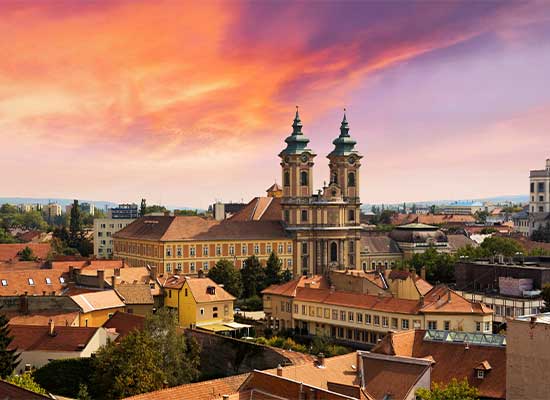
Take a day trip to Eger
Eger is a wonderfully charming town in Hungary which is known for its flavoursome and delicious local wine. It takes around 2.5 hours to reach Eger from Budapest by train, making it possible as a day trip if you’re looking for something new to do. The highlight of a trip to Eger is visiting the Valley of the Beautiful Women, otherwise known as a string of local wine taverns where you can taste the famous Bulls Blood red wine that is produced here. Other highlights in Eger include the cathedral and the northernmost minaret in Europe.
If you’re interested in a group tour to Eger, check out Tucan Travel’s EEBR trip here.
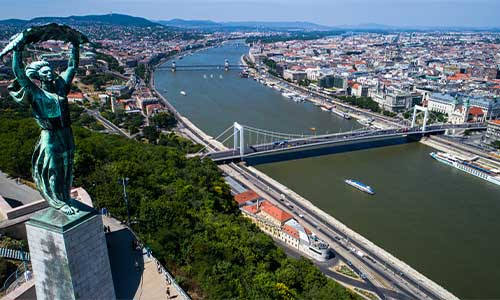
Enjoy the view from Gellert Hill
Gellert Hill offers some of the best views of Budapest and the River Danube. Rising 140 meters from the ground it’s a short but beautiful hike to the top where you can see the famous Statue of Liberty. The statue represents Hungary’s liberation from the Nazi rule, but since it was erected during the Soviet period, a Soviet soldier was added to the base of it. After the end of the Communist rule, the soldier was removed and the female statue representing Liberty remained to honour Hungary’s independence. At the base of Gellert Hill you can find Hotel Gellert and the Thermal Bath which is a stunning spa built in the style of Art Nouveau.
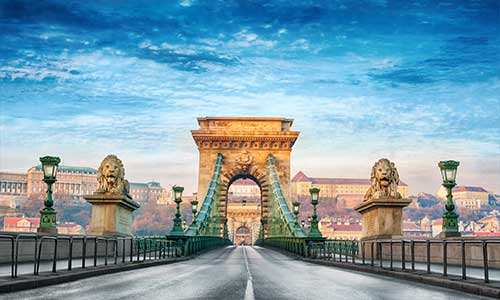
Walk along the Chain Bridge
Budapest has a total of eight bridges, yet the Chain Bridge is undoubtedly the most famous of all. Opened in 1849, it is the oldest of the bridges and was the first to easily connect the people of Buda and Pest. The two large lion heads that sit at either side of the bridge were added in 1852 and have become a well known symbol of Budapest. The bridge was considered at the time a modern engineering wonder and represents the advancement of Hungary and the unity of the East and the West sides. It takes a mere fifteen minutes to walk across, offers some fantastic views of the Danube and looks particularly spectacular when it's lit up in the evening.
Featured Tours



